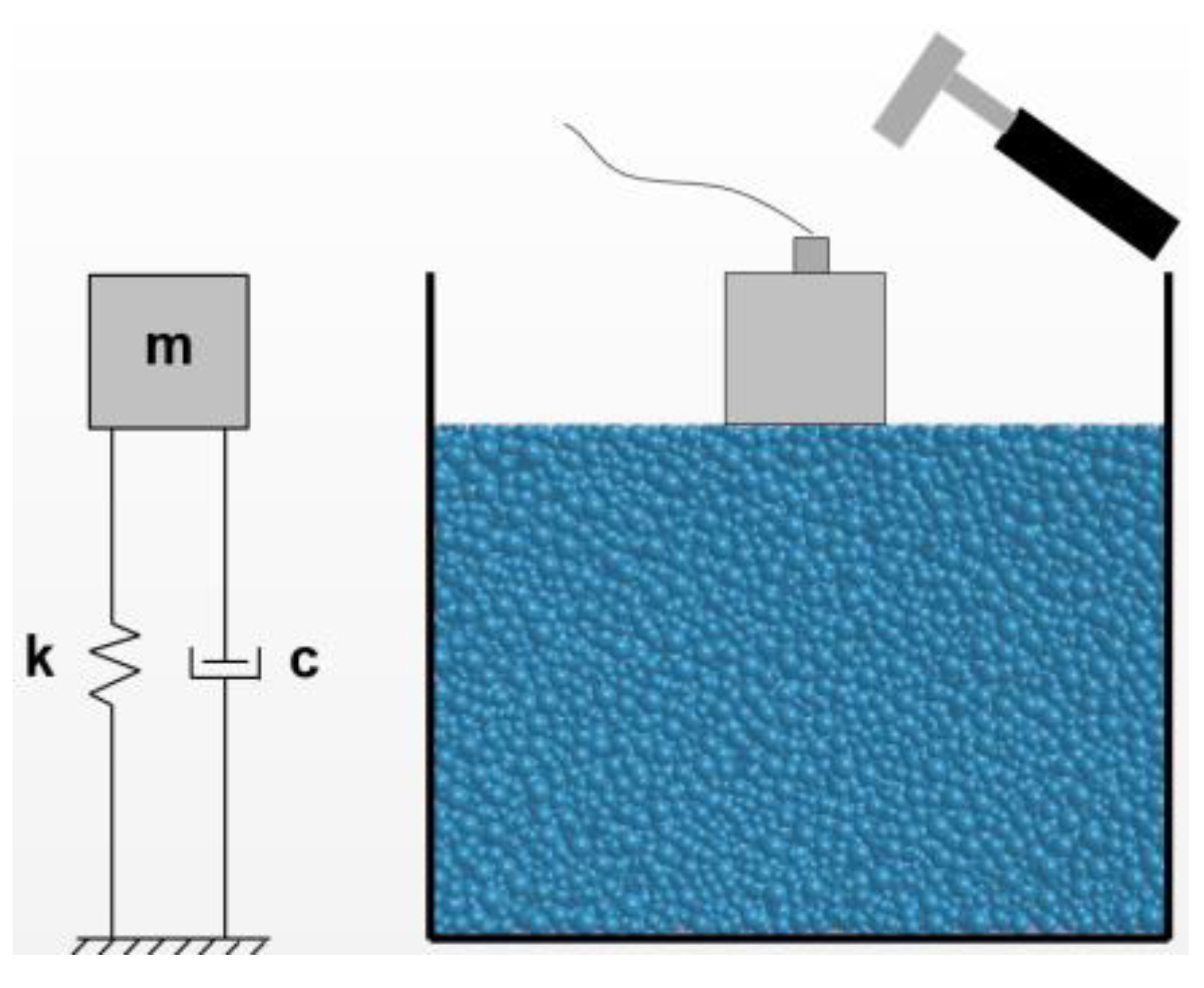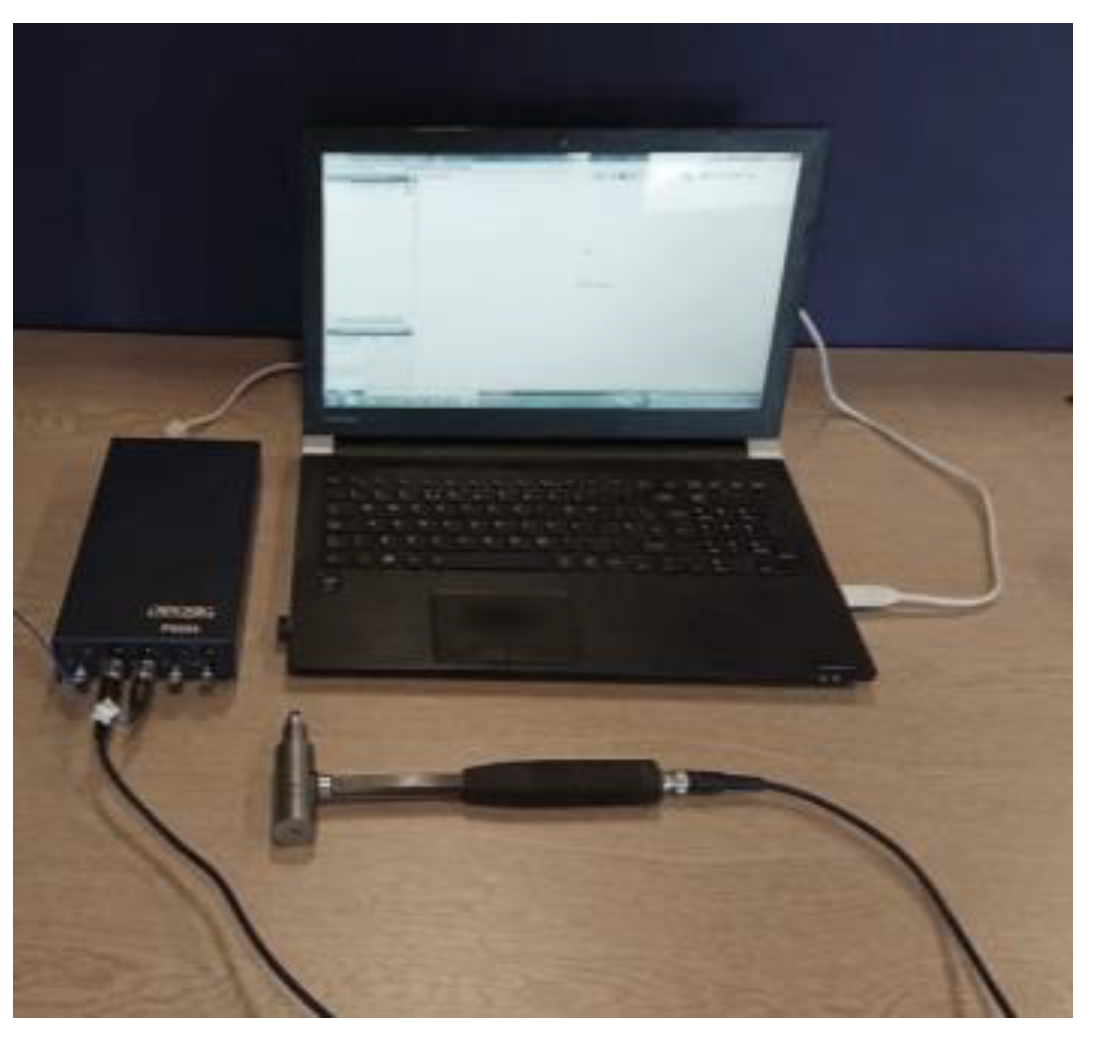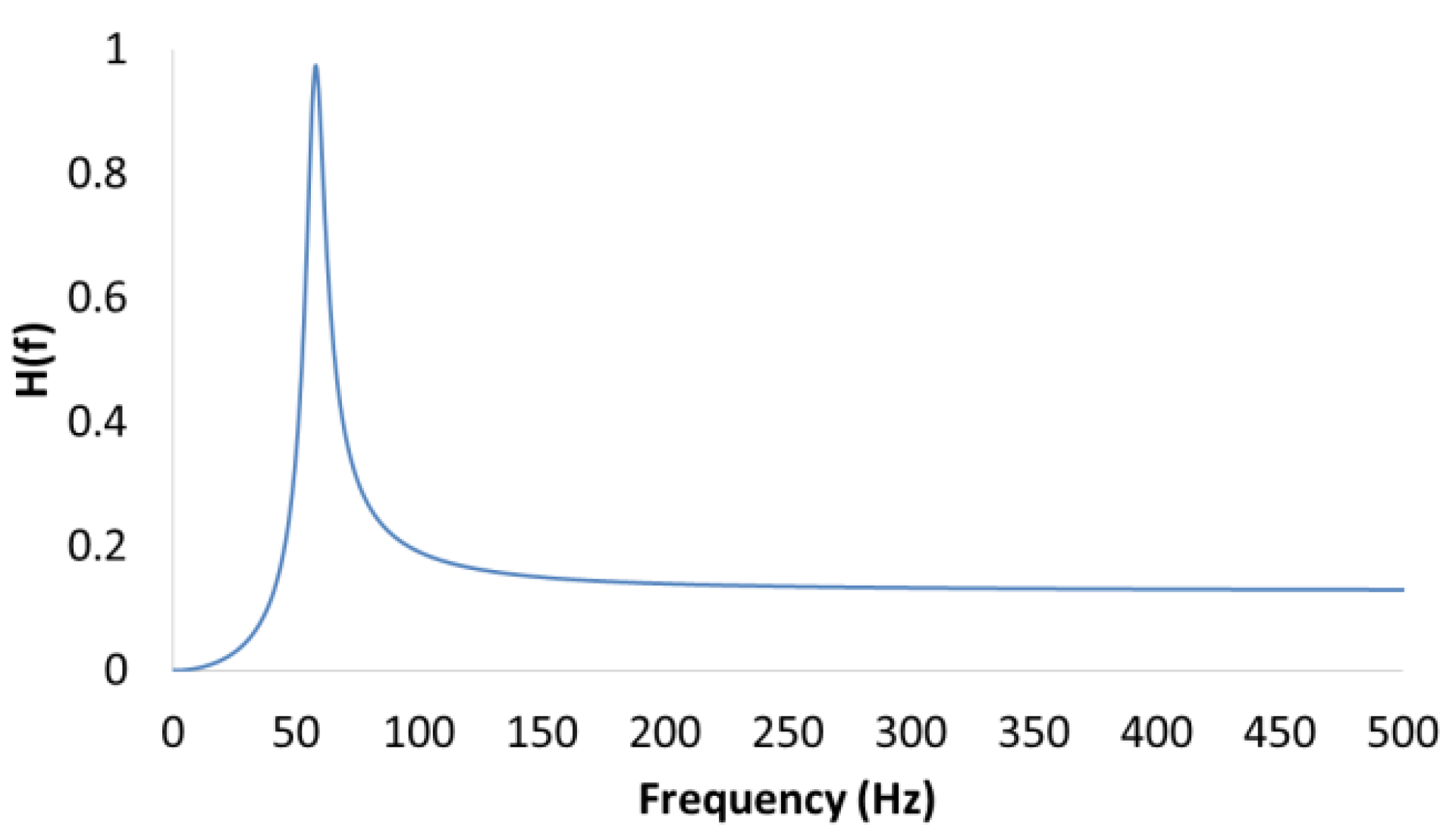Dynamic Properties Evaluation of Railway Ballast Using Impact Excitation Technique †
Acknowledgments
References
- Ngamkhanong, C.; Kaewunruen, S.; Baniotopoulos, C. A review on modelling and monitoring of railway ballast. Struct. Monit. Maint. 2017, 4, 195–220. [Google Scholar]
- Kaewunruen, S.; Remennikov, A.M. Monitoring structural degradation of rail bearing pads in laboratory using impact excitation technique. In Proceedings of the 1st International Conference on Structural Condition Assessment, Monitoring, and Improvement, Perth, Australia, 12–14 December 2005; pp. 389–394. [Google Scholar]
- Kaewunruen, S.; Sussman, J.M.; Matsumoto, A. Grand challenges in transportation and transit systems. Front. Built Environ. 2016, 2, 4. [Google Scholar] [CrossRef]



| Case | K (kN/m) | C (kNs/m) | f(Hz) | Correlation Coefficient (%) |
|---|---|---|---|---|
| Dry | 1,036 | 0.3721 | 59 | 99.85 |
| Flooded | 708.4 | 0.6364 | 47 | 9.81 |
Publisher’s Note: MDPI stays neutral with regard to jurisdictional claims in published maps and institutional affiliations. |
© 2018 by the authors. Licensee MDPI, Basel, Switzerland. This article is an open access article distributed under the terms and conditions of the Creative Commons Attribution (CC BY) license (https://creativecommons.org/licenses/by/4.0/).
Share and Cite
Ngamkhanong, C.; Tang, T.; Kaewunruen, S. Dynamic Properties Evaluation of Railway Ballast Using Impact Excitation Technique. Proceedings 2018, 2, 1149. https://doi.org/10.3390/proceedings2161149
Ngamkhanong C, Tang T, Kaewunruen S. Dynamic Properties Evaluation of Railway Ballast Using Impact Excitation Technique. Proceedings. 2018; 2(16):1149. https://doi.org/10.3390/proceedings2161149
Chicago/Turabian StyleNgamkhanong, Chayut, Tao Tang, and Sakdirat Kaewunruen. 2018. "Dynamic Properties Evaluation of Railway Ballast Using Impact Excitation Technique" Proceedings 2, no. 16: 1149. https://doi.org/10.3390/proceedings2161149
APA StyleNgamkhanong, C., Tang, T., & Kaewunruen, S. (2018). Dynamic Properties Evaluation of Railway Ballast Using Impact Excitation Technique. Proceedings, 2(16), 1149. https://doi.org/10.3390/proceedings2161149







